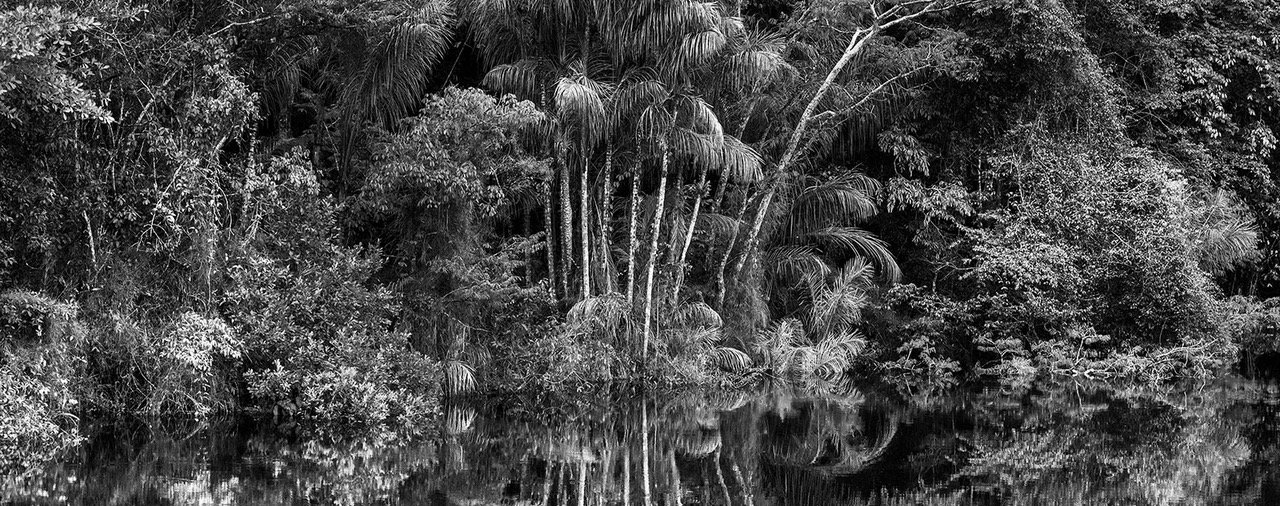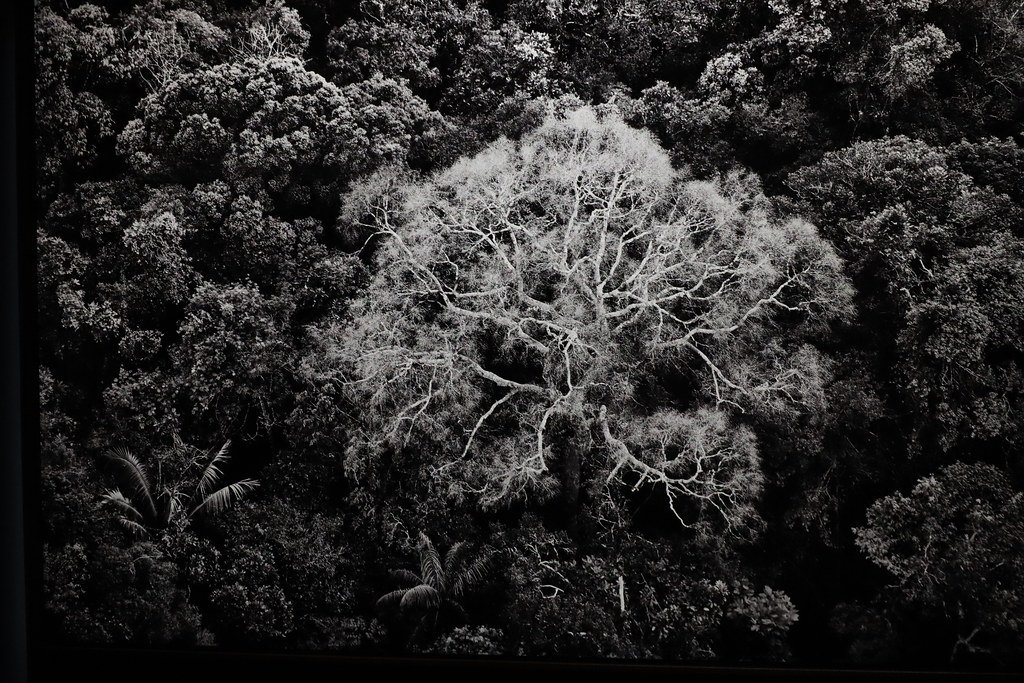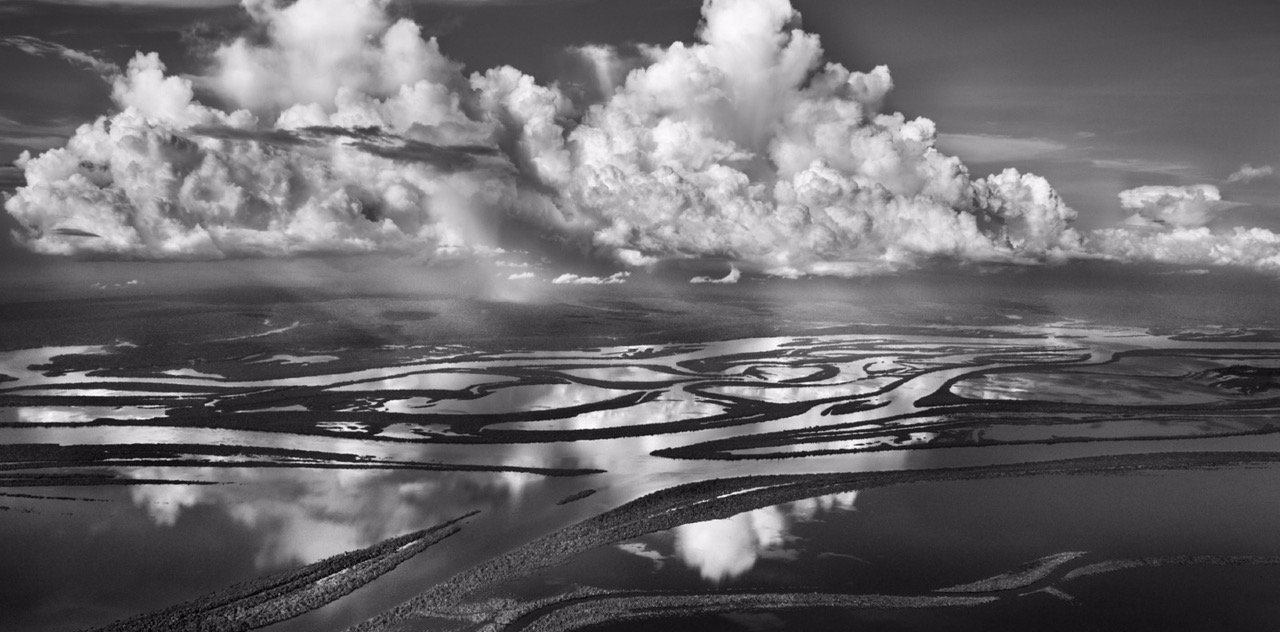Sebastião Salgado’s Amazônia
Exhibition as Moral Imperative
Bienvenue and welcome back to Musée Musings, your idiosyncratic guide to Paris and art. This week, in memory of Sebastião Salgado, who died on May 26, I am presenting an update of the review I wrote for the exhibition of his photographs, Amazonia that I saw at the Musée de la Musique at the Philharmonie de Paris.
Sabastiâo Salgado at Musée de la Musique, Philharmonie de Paris
But first I want to mention an exhibition I saw this past week at the Cité de l’architecture et du patrimoine, called ‘The Berlin Wall. A World Divided’ (Fig A) which I urge you to see. It’s an exhibition that is excellent and exhaustive and well, exhausting. And also very timely. Not just for me as I leave for Berlin but for all of us as we try to understand what is going on. As the exhibition demonstrates, we have been at this juncture many times before during the past 80 years. The exhibition offers both a much needed contextualization as well as a much needed celebration of the human spirit.
Figure A. The Berlin Wall / A World Divided. Cité de l’architecture et du patrimoine, Paris
And about that human spirit. Sebastião Salgado was a Brazilian documentary photographer and photojournalist. His death was announced by Instituto Terra, the environmental nonprofit that he and his wife founded in Brazil. Here, in part is what his family wrote about his passing: “Through the lens of his camera, Sebastião tirelessly fought for a more just, humane and ecological world…his work offers a sensitive perspective on the most disadvantaged populations and addresses the environmental issues threatening our planet.” As the New York Times columnist wrote, “Mr. Salgado was especially interested in the plight of workers and migrants, and spent decades documenting nature and people in the Amazon rainforest.”
Salvado died about the same time that Elon Musk was sent packing from Washington, poorer and less powerful than when he showed up to destroy with impunity the world that decent people like Sebastiao Salgado worked so hard to improve and protect.
The two passings, one regrettable and the other not fast enough, reminded me of Marc Antony’s oration at Julius Caesar’s funeral in Shakespeare’s play of the same name. Antony said in part, “The evil that men do lives after them; The good is oft interred with their bones.” It is my fervent hope that the good that Salgado did will live long after him. And that Elon Musk is forever connected with the ruin that his ketamine rattled, Nazi saluting brain wrought.
I saw the Salgado exhibition at the suggestion of British author and journalist Alan Riding (And The Show Went On: Cultural Life in Nazi-Occupied Paris). I was a little worried before I went. As I told Alan, I anticipated an exhibition celebrating the Amazon. But celebrations often come uncomfortably close (for me) to exploitation.
That had been my reaction to a photographic exhibition I saw a few weeks before this one at the Atelier des Lumières, called ‘The Last Sentinels’. (Figure 1) In that exhibition, the scenery was spectacular and the face and body adornments of the people depicted were beautiful. The immersive experience was a 40 minute travelogue featuring images projected on all four walls and the floor of the Atelier. (Figure 2). The images changed quickly but not simultaneously. So it would have been impossible to provide written or spoken information about where the images were from or who the images depicted. Unless you recognized a location or a headdress or a costume as it whirled by, all you could say with certainty was that people in furs were near a pole and people without clothes were near the equator. The program was divided into themes like Connection with Nature, Connections between Individuals, Wisdom and Energy. But again, the speed at which the images changed meant that if you looked away for a moment, a theme could change and you wouldn’t know it.
Figure 1. The Last Sentinels, Jimmy Nelson, Atelier de Lumiere
Figure 2. The Last Sentinels
The English photographer Jimmy Nelson, on whose photographs the show was based, had embarked upon his ‘ethnological project’ in 2008. His aim was to photograph ‘indigenous peoples whose civilizations were on the verge of disappearing’. He traveled to five different continents, taking photographs that ‘highlighted the rites, songs and cultural traditions…’ of the peoples he met. Nelson wanted ‘to show these people living in harmony with and preserving nature.’ But as I watched one group gallop along on my left and another sail by on my right, I felt like a voyeur. Nelson surely was not but with neither text nor context to guide me, I was.
That immersive experience reminded me of Benjamin West’s 1770 painting, ‘The Death of General Wolfe' (Figure 3) in which a native American squats in an unsustainable position, silently watching a white general die. The Noble Savage, the stoic Indian Brave. It was a painting for a European audience, far away from the real thing, playing into the romantic tropes of the day. During the next century, the century of Westward Expansion, and in America, artists and photographers were called upon to show a very different native American, the Ignoble Savage. Depicted as the enemy and the ‘other', it gave white Americans license to slaughter native Americans with the same impunity as they did the bison. The pendulum swings and Jimmy Nelson, like Benjamin West before him, showed indigenous peoples as heroes.
Figure 3. The Death of General Wolfe, Benjamin West, 1770
So, it was with some trepidation that I walked into the Amazônia exhibition at the Philharmonie. (Figure 4) I needn’t have worried. This was a completely different experience. An experience that validated a place and the peoples who live in that place as well as the viewer whose level of intelligence was never questioned.
Figure 4 . Amazonia, Photograph, Salgado
Amazonia is Sebastião Salgado’s fourth grand project, following Genesis, Workers and Migration. Their titles alone confirm Salgado’s life mission - to give voice to the unheard and make visible the unseen. For Amazônia, Salgado’s goal was to capture the natural diversity of the Brazilian rainforest and to document its inhabitants. For seven years, he traveled the Amazon, photographing the forest, the rivers, the mountains and the people who live in or on or near them.
And since this is a museum in a concert hall, an original score was commissioned for the exhibition. From the acclaimed French composer, Jean-Michel Jarre, best known for his new age electronic music. More about that in a moment.
The photographs of the forest are huge. And they are black and white. (Figure 5) Salgado worked almost exclusively in black and white. Firstly because he mistrusted the color reproduction process and secondly, because color can be distracting. Maybe it makes hard subjects too easy to look at, too easy to look at without thinking about what you are seeing. The photos that Salgado took from a small watercraft offer us an intimate view of the forest. (Figure 6) With those photos, we are in the forest. The photos he took from the air, the bird’s eye views, (Figure 7) are the ones that most shockingly depict its devastation.
Figure 5. Amazonia, Photograph, Salgado
Figure 6. Amazonia, Photograph, Salgado
Figure 7. Amazonia, Photograph, Salgado
Salgado wanted us to see the fragility of the Amazonian ecosystem and to show that where indigenous peoples live, the forest is almost unchanged, undamaged. More than 300 tribes, each with their own culture and their own language populate the Amazon. These are native peoples whose ancestors fled into the forest when the Spanish arrived over half a millennium ago. And they never left. (Figure 8) As Salgado explained, “Since the Brazilian Constitution of 1988, to protect them, it is forbidden to approach the tribes. Isolated groups who want to contact outsiders have the option of going out of the forest to do so, but the reverse is impossible. I have worked with communities that we have known for only twenty years, and even once with a group that had only been contacted for eighteen months.”
Figure 8. Amazonia, photograph, Salgado
Salgado’s photographs of people - alone, in pairs or kinship or friendship groups, are accompanied by explanatory wall texts. We learn that these people decided where they wanted to be depicted and how they wanted to be presented, clothed or unclothed, with or without face, hair or body adornments, etc.
I found many of the images very moving. One family group shows a man and his wife seated, surrounded by their three children. (Figure 9) All nude, each looks directly at the camera. To me, the photo said, ‘this is who I am, this is who we are’.
Figure 9. Amazonia, Photograph Salgado
Another photograph is of three young women. (Figure 10) The text explains that one of the women had died shortly after this photo was taken. She had ingested a poisonous substance that everyone in her tribe ingests, that everyone knows is lethal. The text outlined attitudes towards and categories of death amongst these people. This woman’s death, because she was young, was considered a good death. The explanation didn’t come with judgement. It was straightforward. It was what it was. As I looked at these photographs, I was reminded of a French documentary film by Thomas Balmès from 2010 called ‘Babies’. (Figure 11) The film follows four different couples from four parts of the world during a pregnancy (the first for the American and Japanese mothers). It shows how each mother (sometimes couple) navigates the pregnancy, the birth and the first years of their respective babies’ lives. The contrasts between the American (San Francisco) and Japanese (Toyko) mothers and their babies and the African and Mongolian mothers and their babies, couldn’t have been more obvious. (Figure 12) But there was no judgement, there was no agenda. It was up to the viewers to interpret the film as we wished. If I saw the American and Japanese couples as overweening (they were) well, that was on me. If I saw the value of just ‘being’ with a baby, again that was my interpretation.
Figure 10. Amazonia, Photograph, Salgado
Figure 11. Babies, 2010, Thomas Balmès, director
12. Bables, 2010, Thomas Balmès, director
There is, of course, one major distinction. With Babies, we are not encouraged to throw aside modern, Western medicine and embrace the natural ways of the African and Mongolian moms. In this exhibition, we are presented with people as they wished to be seen. (Figure 13) But those of us in the over industrialized west are called to action. We are asked to make choices that will help preserve the rainforest rather than continue along the path that is hastening its destruction.
Figure 13. Amazonia, Photogaph, Salgado
There are also recorded testimonials which allow visitors to hear directly from people who live in the forest. One reviewer wrote that Salgado took the last of his photographs and recorded the last of the testimonials just before the Covid 19 epidemic. But one of the testimonials I heard suggests otherwise. A very brave man, I don’t know how else to put it, contended that Jair Bolsonaro, the president of Brazil was intentionally keeping indigenous people from being vaccinated, to eliminate them. Of course, the policy of deforestation did not begin with the current president of Brazil. Deforestation has been going on for nearly a half century. But despite all we know now about climate change, the policy has not changed.
This is an exhibition with a moral (and political) agenda. It is an exhibition that expects people to think about the future of the Amazon, of our planet and what we can do to halt the destruction.
The soundtrack which the Philharmonie de Paris commissioned for this exhibition (Figure 14) was composed by the highly acclaimed musician-composer Jean-Michel Jarre, a pioneer in electronic and new-age music. For this piece, he incorporated sounds from the rainforest - the wind rustling or whipping through the trees, water burbling along rivers and crashing down waterfalls. Birds singing to each other and animals calling out to one another.
Figure 14. Amazonia, Jean-Michel Jarre, original music
Jarre wrote, “I approached the Amazon with respect, in a poetic and impressionistic way.… It carries a powerful image, both for Westerners and for Native Americans…, “I wanted to avoid the ethnomusicological approach or background music. I…established a.. toolbox (of) musical elements - orchestral or electronic - intended to recreate or evoke the timbre of natural sounds, to which are added sounds from the environment, and finally ethnic sources (voice, songs, instruments) from the sound archives of the Museum of Ethnography of Geneva (MEG).(I) used principles of orchestration (and) as in any symphony, the work has its moments of clarity (and) tension.”
The exhibition was special and perhaps it will be mounted again. There is an exhibition catalogue that I urge you to find. Let’s work to undo the evil that Elon Musk has done to America and the world and instead to continue the good and decent work of Sebastião Salgado. Gros bisous, Dr. B.
Thanks to those of you who took time to Comment on last week’s post. They are much appreciated.
New comments Merry Month of May, Deux:
Dear Cousin, How lovely to have all those reminders of such an enjoyable visit in May Beverly, (in spite of the embarrassment of showing my victory over that spectacularly good ice cream). Your fabulous photos and descriptions will help to keep it fresh in the memory for me. But for me the genius of the newly refurbished Notre Dame is the lighting. They have managed to recreate the colour of brilliant candlelight in their choice of electric lights and it gives such a rich, warm glow to the whole building. It was entrancing. I will try to get to that bistrot on my return through Paris next week as it sounds so good. Katherine, Oxford, England
Dear Beverly, I always look forward to your Musee musings....filled with suggestions and recommendations for Paris my favorite city or wherever you happen go be. in another vein,, I am always looking for good locations to study Italian and wonder if your cousin is going to orvieto for that reason. If so would you mind sharing the name of the school or program. I would be most grateful. Sincerely, Susan
Hi, Bev, Try the Bouillon Racine on la rue Racine in the 6th. And up they street is Polidor. Both are excellent and I ate Boeuf Bourguignon at both-delish. Best for reservation at Bouillon Racine; we slipped in by the bar. Both floors are gorgeous. That was Sat night dinner. Polidor was late lunch drop in. One of my fav museums is the Chagall in Nice. So lovely and lots of paintings. Barbara
Dr. B. Hope you’ll do a full report at some time on Notre Dame. I did send a modest contribution and envy you and others seeing a rebirth of the famous cathedral with all the colors and play of the sun. Bill, Ohio
















